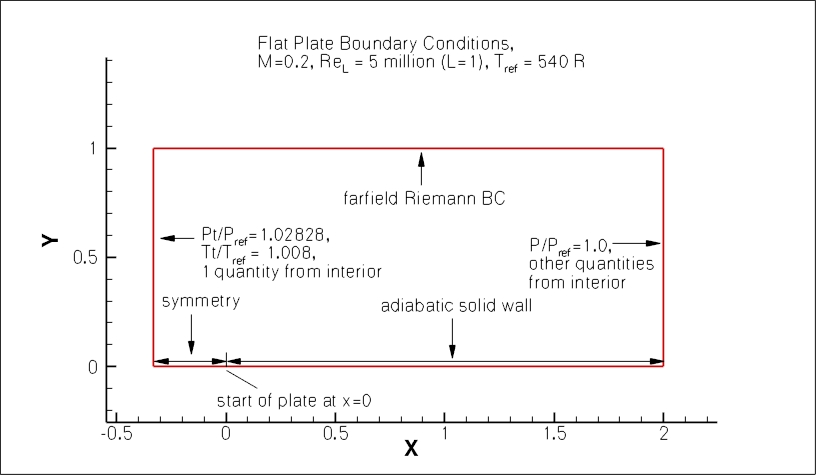 |
Langley Research CenterTurbulence Modeling Resource |
Return to: Turbulence Modeling Resource Home Page
VERIF/2DZP: 2D Zero Pressure Gradient Flat Plate Verification Case - Intro Page
The purpose here is to provide a large sequence of nested grids
of the same family,
along with results from existing CFD codes that employ specific forms of particular turbulence
models, in order to help programmers verify their implementations of these same models.
On a given grid, there may be differences between the results from different codes, but presumably
as the grid is refined the results should approach the same answer (if the flow conditions and
boundary conditions are the same).
With verification, the purpose is not to establish the "goodness" of a model compared to experiment,
but rather to establish that a model has been implemented correctly, as intended according to the
equations and boundary conditions. (It is through validation that a model's "goodness" is
established. This case is provided as a validation case on the page
2DZP: 2D Zero Pressure Gradient Flat Plate Validation Case.)
Because the purpose here is primarily verification, experiment is not specifically looked at,
although law-of-the-wall theory is included for the sake of reference.
The turbulent flat plate case was run at
M = 0.2, at a Reynolds number of Re = 5 million based on
length "1" of the grid. The body reference length is 2 units.
Because the solid wall of the grid extended from x = 0 to x = 2,
this means that the Rex at x=1 was 5 million, and Rex at x=2 (the
downstream end of the plate) was 10 million.
The following plot shows the layout of the simple
flat plate grids used for this study, along with the boundary conditions.
(Note that particular variations of the BCs at the inflow, top wall, and outflow
may also work and yield similar results for this problem.)
Note that for this case the maximum boundary layer thickness is about 0.03 L, so the grid height
of y=L is far enough away to have very little influence. For example, a test in which the upper extent
was moved down to y=0.48 L only changed results (integrated drag or skin friction at x=0.97) by
less than 0.2%.
Another important note: although M=0.2 is low enough that the flow is "essentially" incompressible,
this is a compressible flow verification case. Therefore, if you run this case with an incompressible
code, your results may be close - but not quite the same - as the grid is refined.
Grids are provided below. Note that different turbulence models exhibit different
sensitivities to minimum wall-normal spacing.
This case was used as a verification test case for
Drag Prediction Workshop 5 (DPW-5).
What to Expect:
(Other turbulence model results may be added in the future.)
Return to: Turbulence Modeling Resource Home Page
Recent significant updates: Responsible NASA Official:
Ethan Vogel

08/28/2020 - changed SST-V naming to SST-Vm
08/28/2018 - Added SA-RC-QCR2013 verification case
08/03/2018 - Added SA-QCR2013 verification case
07/17/2018 - Added SA-QCR2000 verification case
06/22/2018 - Added SA-RC-QCR2000 verification case
03/13/2018 - added BSL page
02/12/2018 - changes link to SST/SST-V to be SST-V
11/07/2017 - added link to discussion on effect of minimum wall-normal grid spacing
08/20/2014 - added SSG/LRR-RSM-w2012 page
09/11/2013 - added Wilcox2006 page
Page Curator:
Clark Pederson
Last Updated: 03/24/2021